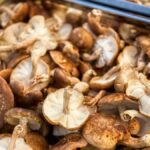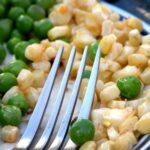Yes, dogs can eat banana peppers. This low-calorie vegetable can be eaten as a snack and provide your dog with certain essential nutrients like vitamins, fiber, potassium, and calcium. Banana peppers are generally mild in spice. However, it is always good to test a food item before adding it to your dog’s diet.

Safe: This food is generally considered safe by the veterinary community. Dogs can eat this food sometimes or in small amounts but contains little to no nutritional value.
| Food Safety | Safe in moderation |
| Nutritional Value | Antioxidants, Vitamins A and C, |
| Potential Risks | Stomach issues, excessive thirst, bloating, calcium, low calorie, and low carb. |
How to Feed Banana Peppers to Your Dog?
Thoroughly wash the banana peppers before serving them to your dog. You can serve them raw or cooked banana peppers. However, it is best to remove the seeds before you give them to your dog.
You can steam the peppers or make a puree to mix with your dog’s food.
How Many Banana Peppers Are Safe for Dogs?
Your dog can eat one banana pepper, deseeded and chopped. The quantity also depends on your dog’s size.
You can chop up a banana pepper and sprinkle some as a kibble topper on your dog’s food to give your dog’s meal a nice flavor.
Frequently Asked Questions
-
Dogs do not have high spice tolerance and can have digestive issues if they regularly eat chili. Even if your dog doesn’t display an adverse reaction to chili, your dog is unlikely to taste chili because they have limited taste buds.
-
Bell peppers are safe for dogs to eat. You can give your dog red, orange, green, and yellow bell peppers in moderation.
-
Yes, dogs can eat cooked banana peppers. Remember to deseed them and remove the stems when serving them to your dog.







